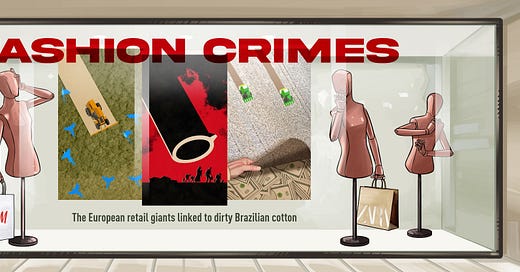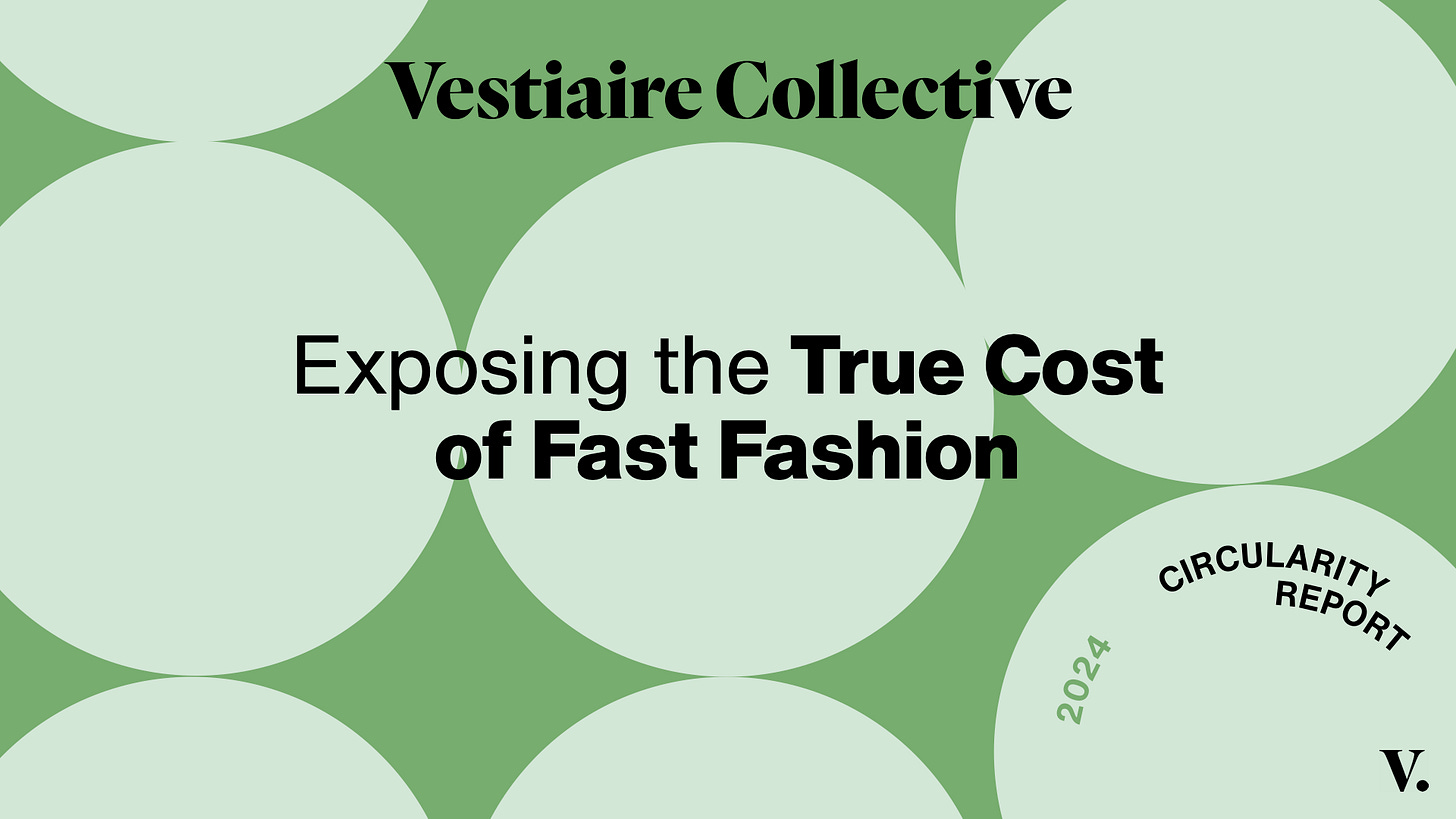April in Fashion, Condensed.
Debunking sustainable fashion myths, bioplastics are as toxic as regular plastics, and how brands can cope with incoming regulation.
Hello there,
In April, I hosted a panel talk for independent retail group Lone Design Club all about busting sustainable fashion myths. Together with two brilliant writers, Bianca Foley and JD Shadel, we unpacked the pervasive myths that linger despite no evidence, clear origin or logic. They included crowd favourites like:
Fashion is the 2nd most polluting industry in the world
Luxury is inherently more sustainable than fast fashion
You can tell if a garment was sustainably or ethically produced by the ‘Made In’ information on the label
It was a fascinating conversation that delved into not just why these stats are wrong (at best, they oversimplify extremely complicated issues and at worst, they’re xenophobic) but the impact that bad data has on the industry and by extension, shoppers.
How can anyone, from a fashion CEO to a conscious consumer, make an informed decision when the information they’re being told is outdated or simply incorrect?
In recent years, I’ve heard plenty about brands not just making big decisions based on bad data, but completely delaying their sustainability commitments because of a lack of available data. I wrote about this for Harper’s Bazaar a few years ago, you can read that piece here.
I recommend checking out a recent newsletter from one of my favourite Substack publishers The Crisps, which busted 50 (!!) sustainability myths in one fell swoop, covering everything from degrowth to certifications.
All this myth-busting is an unsurprising reaction to the overwhelming abundance of misconceptions and generalisations that have plagued the industry for so long, slowing progress and diluting the messages that would make an impact.
In my opinion, the fashion media has a big part to play in checking its facts. But we also need more independent reports that aren’t all funded by retail giants, more companies adopting traceability tech to accurately measure their impact, and more data scientists to analyse the vast amount of information required to accurately understand fashion’s progress.
Until next month,
Meg
Things I Didn’t Write
‘A Very Odd And Ugly Worldview’: The Dark Side Of Fast Fashion Brand Brandy Melville by Adrian Horton for The Guardian
10 Fashion Revolutionaries’ Visions for the Next Decade in Sustainable Fashion by Amy Miles for Good On You
Suicide and Abuse Revealed at Under Armour, Columbia and American Eagle Supplier by Rob Hastings for iNews
Regulation, Regulation, Regulation – A How-to-Cope Guide For The Apparel Sector by Amy Nguyen for Innovation Forum
Sustainable Style: How Fashion Can Afford And Accelerate Decarbonization by McKinsey & Co
Claims Against Companies’ Directors for ESG Breaches Are Coming by Paul Taylor, Georgie Glover, Hannah McCullagh for The Fashion Law
Bioplastics As Toxic As Regular Plastics; Both Need Regulation, Say Researchers by Alden Wicker for Mongabay
How Learnings from Rana Plaza are Being Rolled Out in Pakistan by Aditi Mayer for Vogue Business
‘Sustainable Fashion’ Needs A Breakthrough. Here’s A Blueprint For It by Brooke Roberts-Islam for Forbes
Debunking 50 Myths About “Sustainability” in Fashion by Tanita Hecking And Lavinia Muth for The Crisps
The To-Do List
Fashion Crimes: The European Retail Giants Linked to Dirty Brazilian Cotton by Earthsight
In its latest report, Earthsight has discovered that cotton used by H&M and Inditex (Pull&Bear, Bershka, Massimo Dutti, Stradivarius and Zara) is linked to large-scale deforestation, land grabbing, human rights abuses and violent land conflicts in the Brazilian Cerrado.
Exposing the True Cost of Fast Fashion: The 2024 Circularity Report by Vestiaire Collective
Based on surveys with 13,000 respondents across five markets, Vestiaire Collective’s new report found that fast fashion is a false economy and that shopping preloved is 33% more affordable long term than buying brand-new fast fashion. Read more insights below!
The Future of Synthetics by Textile Exchange
Synthetics make up the majority of textile production globally, and they’re not going anywhere. So what could a more positive future of synthetic textiles look like? Textile Exchange’s new report dives into the reality and possibilities of these materials.







